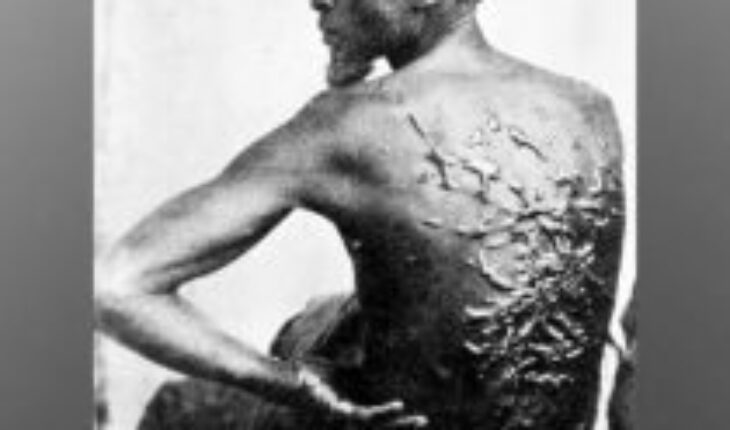And that’s exactly what happened.
Gordon’s portrait was taken at a time when the country was debating whether war efforts were worthwhile and whether black men, enslaved or freed, should be able to enlist as soldiers.
In their book “Envisioning Emancipation: Black Americans and the End of Slavery,” Professor Krauthamer and her co-author, photography historian Deborah Willis, describe how advances in photography allowed the image of Gordon’s whipped back to be affordably reproduced on small cards and shared widely.
Abolitionists sold reprints of the image to raise money for their efforts. But, Krauthamer explains, Reactions to the portrait were mixed.
“It was very common for people to say, it’s false, I don’t think so,” he says. “Whites did not believe that blacks were reliable witnesses, not even of their own experiences.”
On July 4, 1863, the popular magazine “Harper’s Weekly” reprinted an engraving of Gordon/”Whipped Peter” along with images of Gordon in the Union uniform. The accompanying article was titled “A Typical Negro” and described Gordon’s harrowing escape from slavery and his courageous record of service in the Union army.
Even for an article criticizing slavery, historians noted the Shades of racism when the author strives to describe Gordon’s “unusual intelligence and energy.”
The legacy of “Whipped Peter”
The Civil War was the first conflict to be documented through photography, but very few images capture the horrors and brutality of slavery as clearly as the image of “Peter Scourged.”
Although his images became an effective tool for anti-slavery messaging and propaganda, Krauthamer notes that very little is known about Gordon’s life and legacy after he joined the Union army.
“It must be argued that [el retrato] it was just another way of objectifying a black body,” he explains, adding that modern discussions of Gordon’s portrait underscore the The power of photography to document the truth.
Less than a century after Gordon’s portrait was taken, Emmett Till’s mother, Maime, celebrated her son’s funeral with the casket opened after he was brutally kidnapped, tortured and lynched. She said, “I wanted the world to see what they did to my baby.”
That photo of Till’s mutilated body also shocked the American conscience and revealed the Enduring legacy of racism in the U.S.
Krauthamer says that, as a historian, she tries to focus not only on the pain but also on the joy of the African-American experience in her work.
“I think a lot (….) It has focused on ‘What’s the real story?’ And I just want to know, what was his life like? Who did he love? What did you hope to achieve?
“My hope is that that’s what Will Smith’s film and this photograph do: open a portal to our ability to imagine that history and that humanity.”





